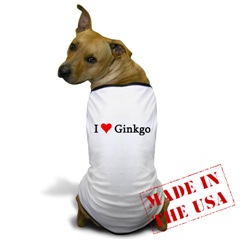At the website of
Recipe Zaar I discovered the following text, followed by recipes:
The ginkgo nut is a hard shelled kernel/nut from the maidenhair tree commonly known as the ginkgo biloba, which is an ancient plant. Traditionally a Chinese food. It is said that this nut brings good luck. Added to most sweet and savory dishes. Often sold as an alternative to the lotus seeds in “eight treasure dishes”. They are very popular in Japan and Korea. They are threaded onto pine needles then grilled and salted. The ginkgo nut has high starch content, and a low fat content. Widely used in Asian cooking. Their texture is that of a soybean. They have a slightly sweet flavor. They are often used in stuffing, soups, desserts, meat and poultry dishes as well as many vegetarian dishes. The ginkgo trees are considered scarce in China. The seeds are available canned, sold as "White Nuts", and can be found in many Asian food stores in the West, they also sold dried, or shelled and canned in brine. If purchased in the dry form, they must be shelled at home and then blanched. When buying the canned form, they should be rinsed of their brine before use. The nuts are seasonal and not easy to find in their fresh form year round. A fresh variety is available in the fall and winter months. Popularity is growing in the United States but is not too widespread because Americans are not very familiar with the culinary uses of this particular nut.. May be found in special markets, or your regular grocery store, year round.
Ingredient
Season: available year-round
How to store: These nuts will keep well unshelled; once they are shelled they only keep a short time refrigerated.
How to prepare: To use the nuts; soak the kernels in hot water to loosen the skins off. Cook till they are a delicate shade of green.






